A 找出峰值
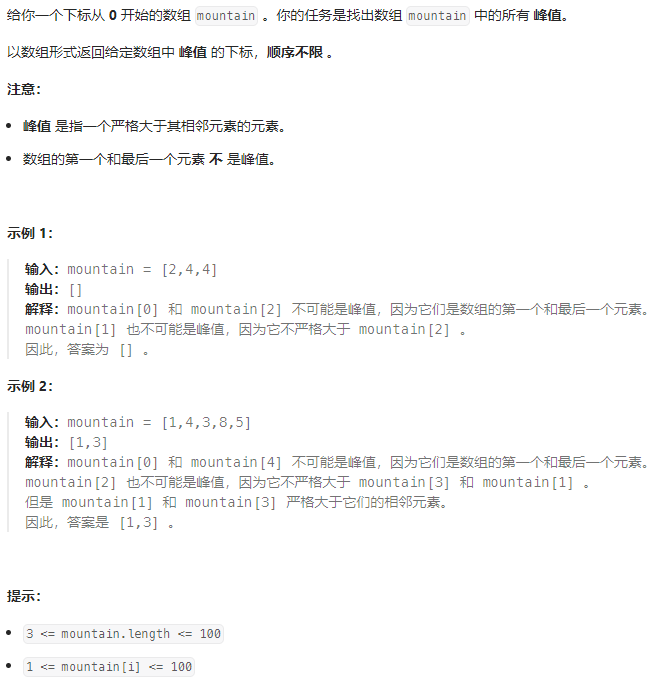
枚举
class Solution {
public:vector<int> findPeaks(vector<int> &mountain) {int n = mountain.size();vector<int> res;for (int i = 1; i < n - 1; i++)if (mountain[i] > mountain[i - 1] && mountain[i] > mountain[i + 1])res.push_back(i);return res;}
};
B 需要添加的硬币的最小数量
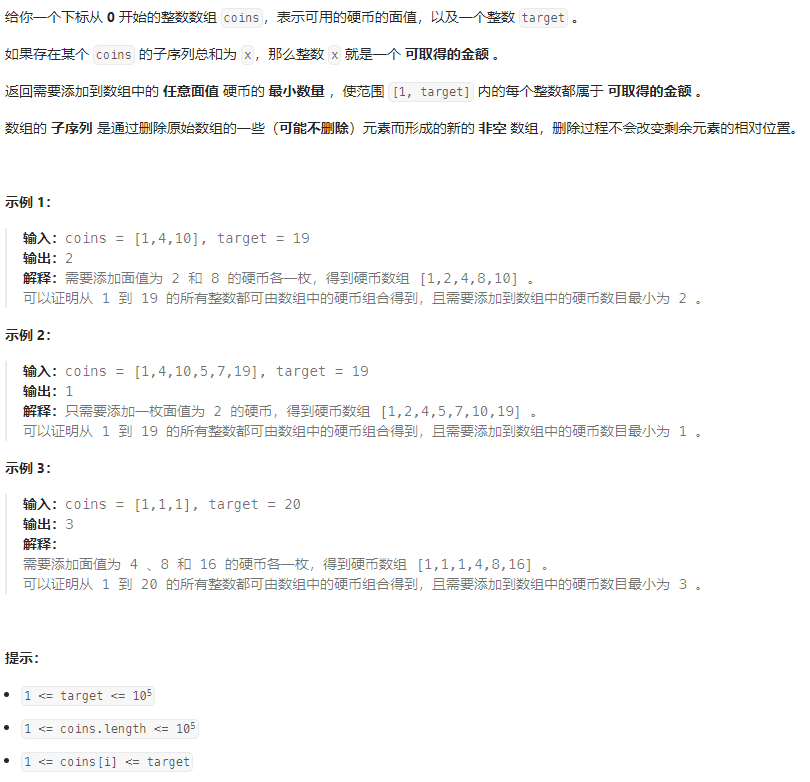
贪心:对 c o i n s coins coins 升序排序,枚举 c o i n s [ i ] coins[i] coins[i] ,设当前已经可获得 [ 0 , r e a c h ] [0,reach] [0,reach] 范围内的任意整数金额,若 c o i n s [ i ] ≤ r e a c h + 1 coins[i] \le reach + 1 coins[i]≤reach+1 ,则由 c o i n s [ 0 , i ] coins[0,i] coins[0,i] 的子序列可得到 [ 0 , r e a c h + c o i n s [ i ] ] [0,reach+coins[i]] [0,reach+coins[i]] 范围内的任意整数金额度,否则需要添加一个尽可能大的硬币 r e a c h + 1 reach + 1 reach+1
class Solution {
public:int minimumAddedCoins(vector<int> &coins, int target) {sort(coins.begin(), coins.end());int res = 0;int e, i, reach;for (e = 1, i = 0, reach = 0; reach < target && i < coins.size();) {if (coins[i] <= reach + 1) {reach += coins[i++];} else {res++;reach += reach + 1;}}for (; reach < target;) {res++;reach += reach + 1;}return res;}
};
C 统计完全子字符串
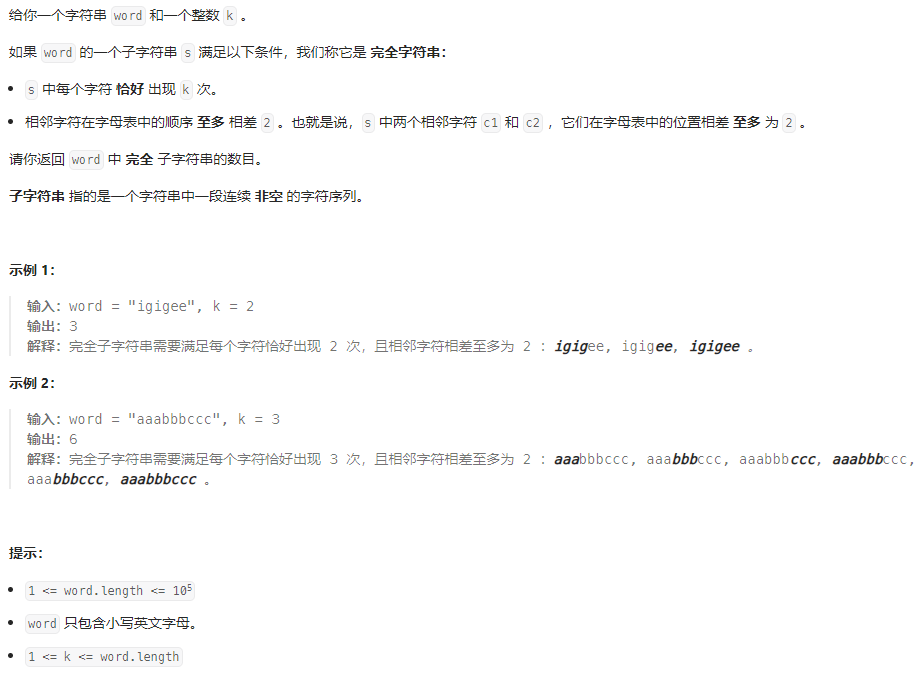
枚举 + 前缀和:首先用条件2将 w o r d word word 划分成若干满足子字符串,使得各子字符串内部任意相邻字符满足条件2,然后只需在各个子字符串中找满足条件1的子字符串,这样的字符串的长度只能是 k , 2 k , ⋯ , 26 k k,2k,\cdots,26k k,2k,⋯,26k 其中之一,枚举子字符串可能的长度 l e n len len,然后滑动窗口枚举场长为 l e n len len 的子字符串,用前缀和判断在该子串中的字符数量是否为 k k k
class Solution {
public:int cmp(const string &s, int k) {int n = s.size();int pre[n + 1][26];//前缀和for (int j = 0; j < 26; j++)pre[0][j] = 0;for (int i = 0; i < n; i++)for (int j = 0; j < 26; j++)pre[i + 1][j] = pre[i][j] + (s[i] - 'a' == j ? 1 : 0);int res = 0;for (int len = k; len <= s.size() && len <= 26 * k; len += k) {for (int l = 0, r = len - 1; r < n; l++, r++) {//子串s[l,r]int can = 1;for (int i = 0; i < 26; i++) {if (pre[r + 1][i] - pre[l][i] != 0 && pre[r + 1][i] - pre[l][i] != k) {can = 0;break;}}if (can)res++;}}return res;}int countCompleteSubstrings(string word, int k) {int res = 0;for (int i = 0, j = 0, n = word.size(); i < n;) {while (j + 1 < n && abs(word[j + 1] - word[j]) <= 2)j++;res += cmp(word.substr(i, j - i + 1), k);i = ++j;}return res;}
};
D 统计感冒序列的数目
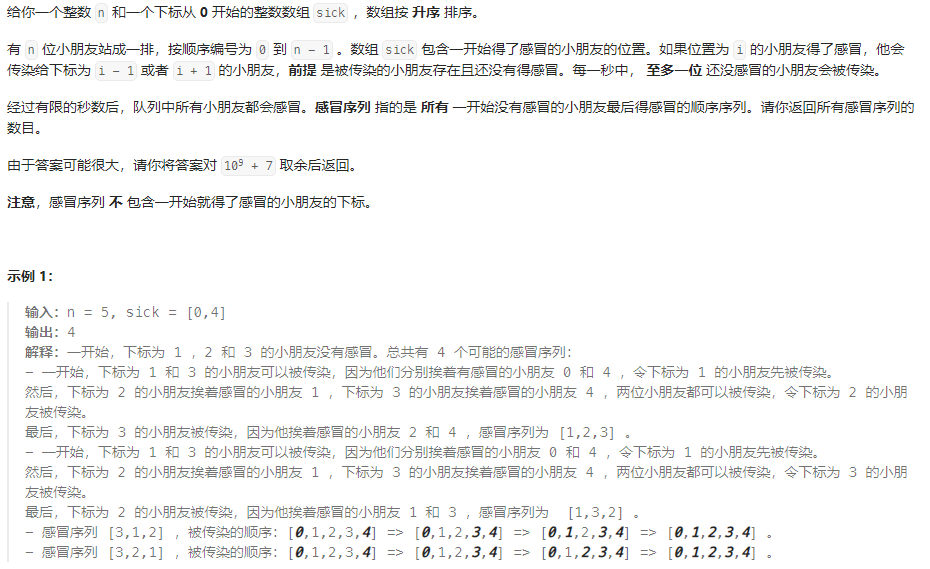
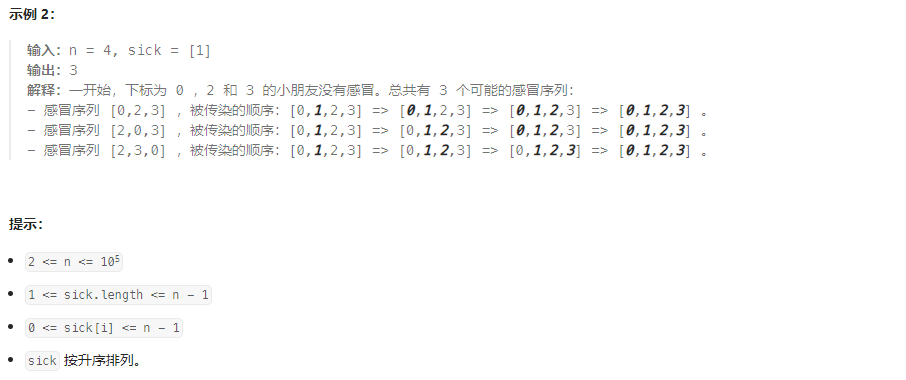
计数 + 逆元:设以感冒的人为间隔,未感冒的人可以划分成若干人数为 a i a_i ai 的组: a 1 , ⋯ , a k a_1,\cdots,a_k a1,⋯,ak,总序列数为: ( ∑ a i ) ! ∏ a i ! × ∏ f ( a i ) \frac {(\sum a_i)!} {\prod a_i!} \times \prod f(a_i) ∏ai!(∑ai)!×∏f(ai) ,其中当 a i a_i ai 不是与边界相邻的组时 f ( a i ) = 2 a i − 1 f(a_i)=2^{a_i-1} f(ai)=2ai−1 ,否则 f ( a i ) = 1 f(a_i)=1 f(ai)=1
class Solution {
public:using ll = long long;ll mod = 1e9 + 7;ll fpow(ll x, ll n) {//快速幂 x^nll res = 1;for (ll e = x; n; e = e * e % mod, n >>= 1)if (n & 1)res = res * e % mod;return res;}ll inv(ll x) {//x 在 mod 下的匿元 return fpow(x, mod - 2);}int numberOfSequence(int n, vector<int> &sick) {vector<ll> fact(n + 1, 1), f2(n + 1, 1);for (int i = 1; i <= n; i++) {fact[i] = fact[i - 1] * i % mod;f2[i] = f2[i - 1] * 2 % mod;}int res = 1;int m = sick.size();int s = 0;if (sick[0] != 0) {//与左边界相邻的组s += sick[0];res = res * inv(fact[sick[0]]) % mod;}if (sick[m - 1] != n - 1) {//与右边界相邻的组s += n - 1 - sick[m - 1];res = res * inv(fact[n - 1 - sick[m - 1]]) % mod;}for (int i = 0; i < m - 1; i++)//枚举中间的各个分组if (sick[i + 1] != sick[i] + 1) {int t = sick[i + 1] - sick[i] - 1;s += t;res = res * inv(fact[t]) % mod;res = res * f2[t - 1] % mod;}res = res * fact[s] % mod;return (res + mod) % mod;}
};



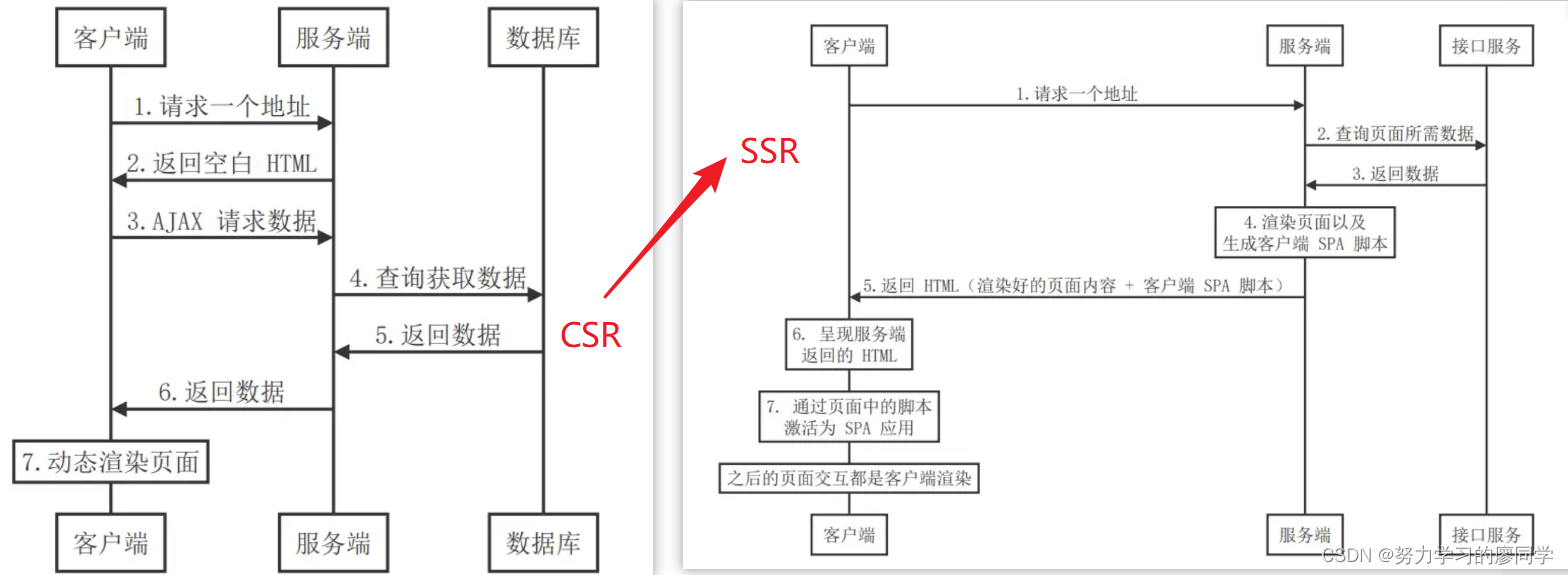
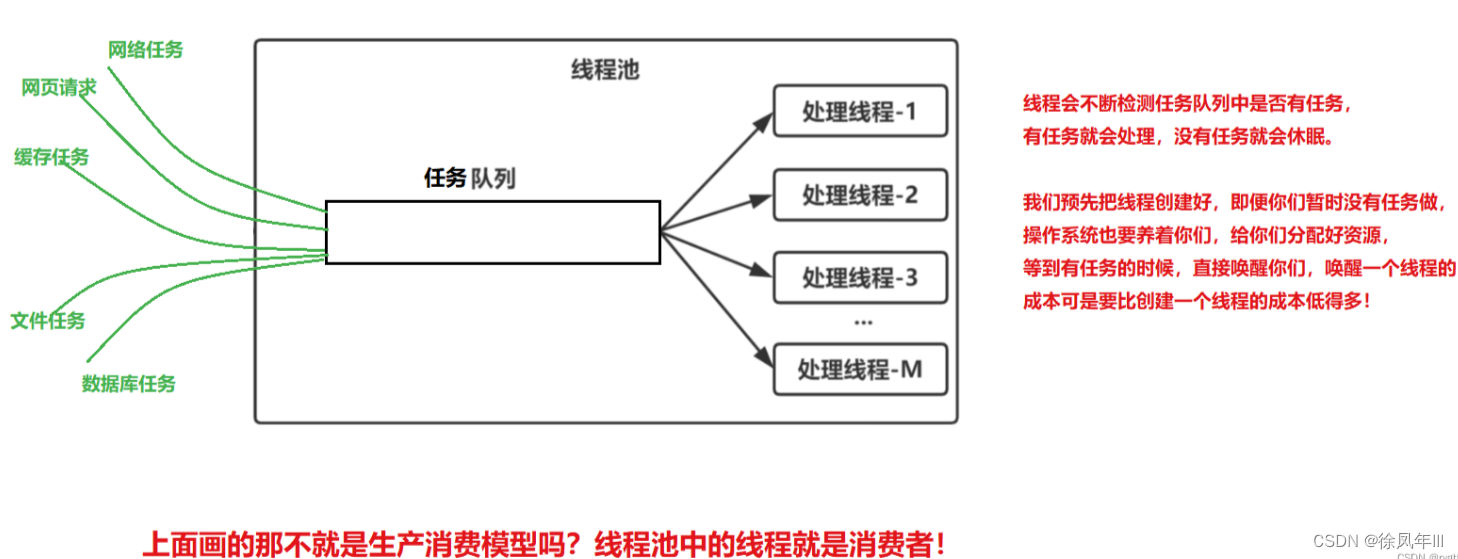

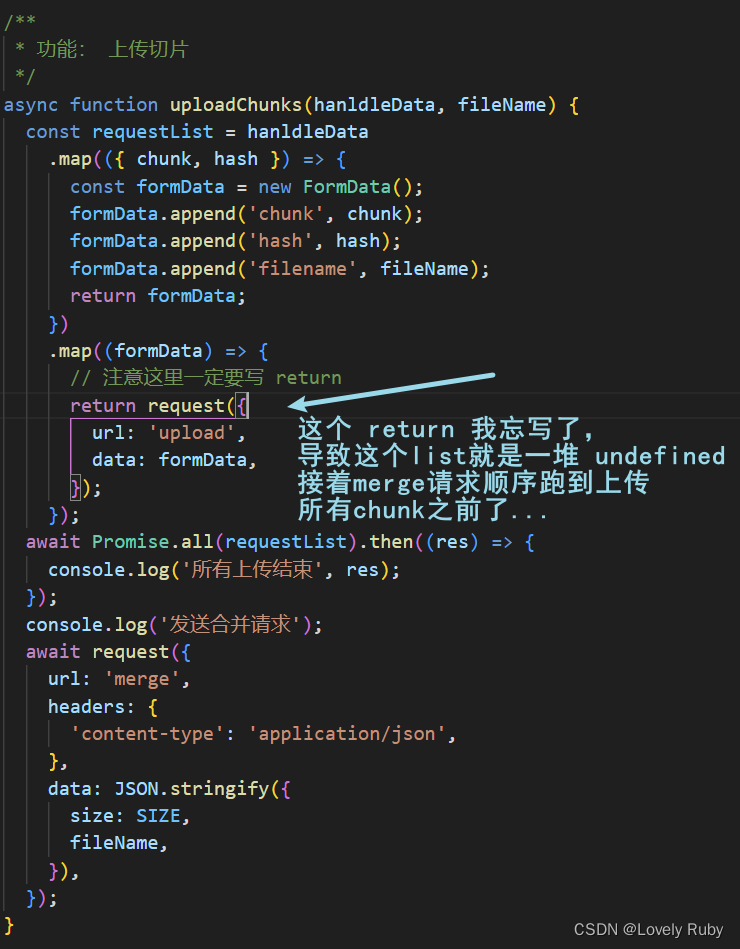


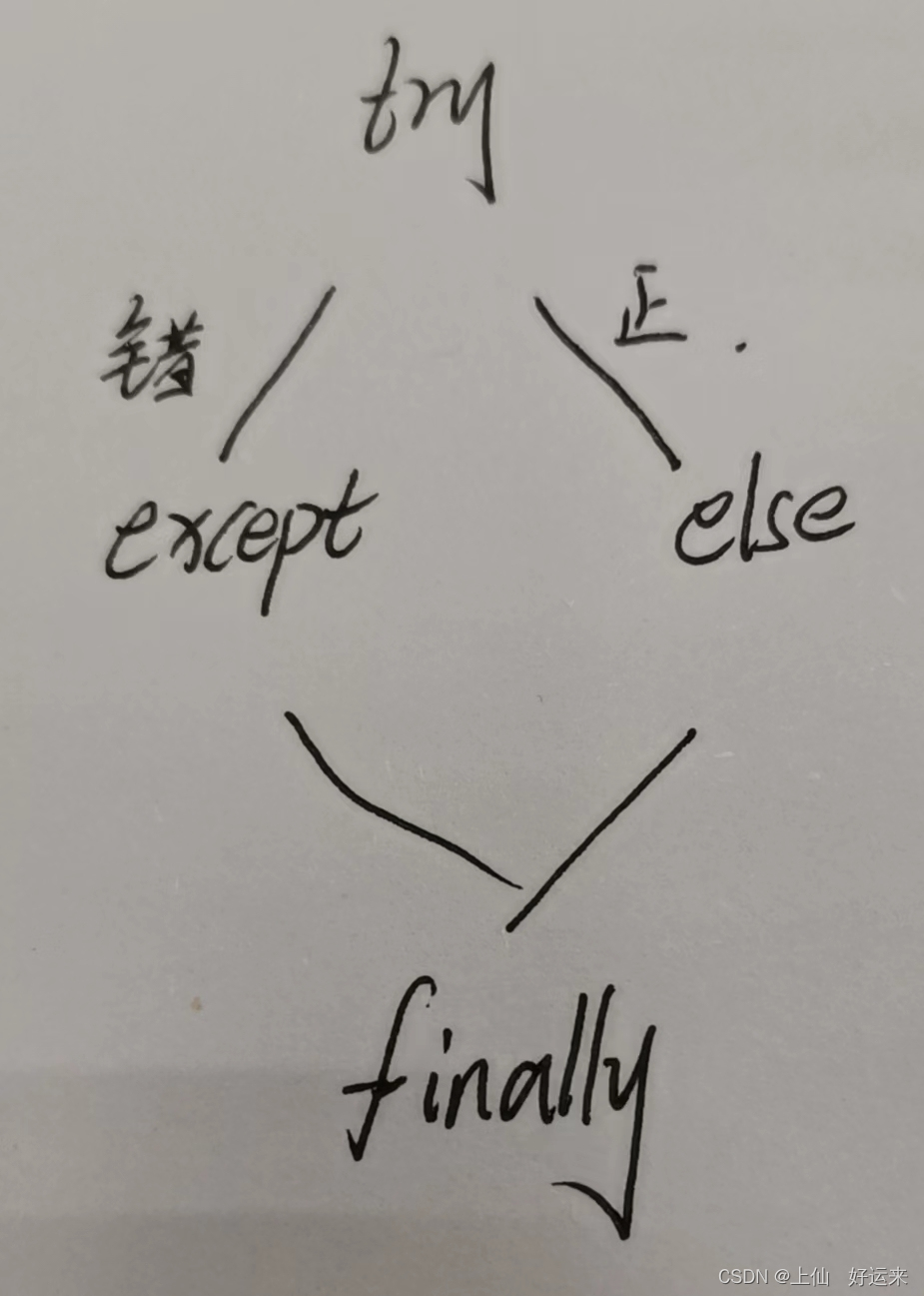

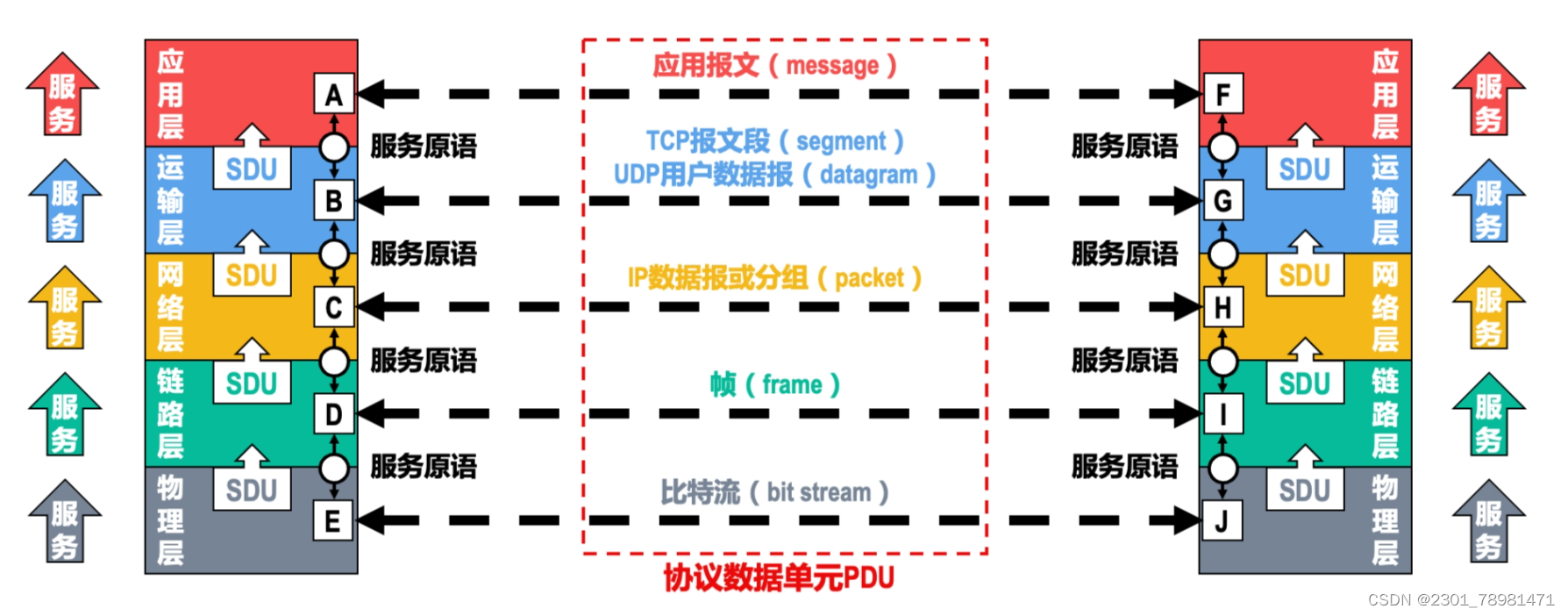


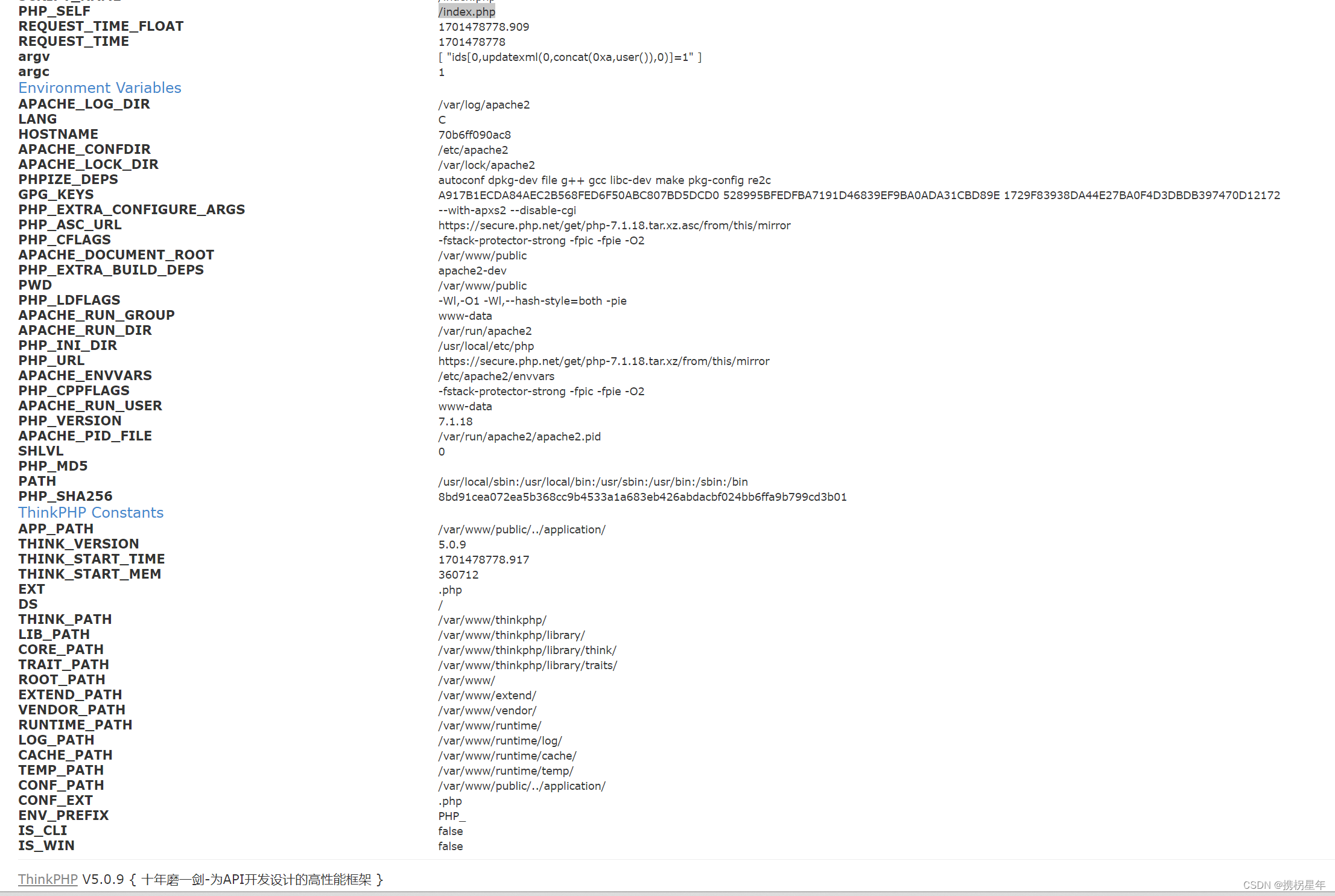


![[蓝桥杯 2019 省 B] 特别数的和-C语言的解法](https://img-blog.csdnimg.cn/65eed59a4f1044378c95f3d03e7d3cd1.png)

